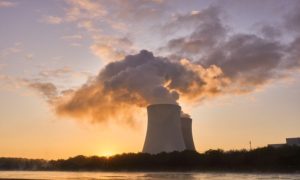Hydropower, also known as hydroelectric power, is the power generated by water cycles. Hydropower has been in existence since the old days. It has numberless uses to generate hydropower, water flowing at a higher speed, and drives the turbines responsible for converting the energy to electricity. Today, hydropower is the primary source of energy in many countries. This article will lay its foundation by explaining hydropower’s main and typical uses.
1. Production of electricity
Primarily, hydropower is used to generate clean and environmentally friendly electricity. In hydroelectric power plants, there are dams and water reservoirs where the water is stored. The water is then released at a top speed to turbines and spun, moving the motors and generators, creating hydroelectric power.

2. To Run Industries
Hydropower is the common energy used in industries due to its plentiful energy. Compared to other traditional sources of energy, the potency of hydropower is higher. Unlike other sources, hydropower is clean energy; thus, it is not likely to tamper with the industries’ products. In addition, this type of energy can steer big machines and parts in the industry.
3. In Homes
Hydropower has replaced the traditional source of energy. This is the most effective application of hydropower in the global frame. Most homestead relies on electricity to supply lighting and for use in cooking appliances.
4. Creation of swimming and fishing grounds
The main ingredients of hydropower are dams and reservoirs. These reservoirs create fishing grounds and thus boost the economy of a country. In addition, these reservoirs have no restricted rules that are likely to limit the public from reaping the benefits of the dams. Secondly, recreational facilities have been enhanced in these reservoirs.

5. Enhancing irrigation
Hydropower has played a vital role in promoting irrigation and other related sectors. The regions around the dams and reservoirs responsible for generating power divert their water to the nearest used areas for irrigation. Hydropower energy has found its way into agriculture by powering water pumps. Traditionally, the methods used to draw water from the dam proved expensive and unsatisfying. With the introduction of hydropower energy, the process of siphoning water from the dams has been eased.
6. Remedy to climate change
To generate hydropower, dams and reservoirs are the main constituents. Climate-wise, the impoundments can alter with the weather of the region in question. Areas around the impoundments are likely to receive evening rainfall, which is a result of evaporation.
7. In transport
Transport sectors have experienced numerous improvements and trends slowly replacing ancient convections. One of the most effective applications of hydropower is in the traffic lights. Traffic lights depend on hydropower energy to execute their tasks. In recent times, electric cars have been propelled by electric motors.
8. Flood Risk management
Impoundments for generating hydropower can hold large volumes of water. Therefore, during heavy rainfall, the dams and reservoirs have as much water as possible, thus controlling the floods that may occur. Similarly, impoundments that are played a vital role in curbing drought cases.




